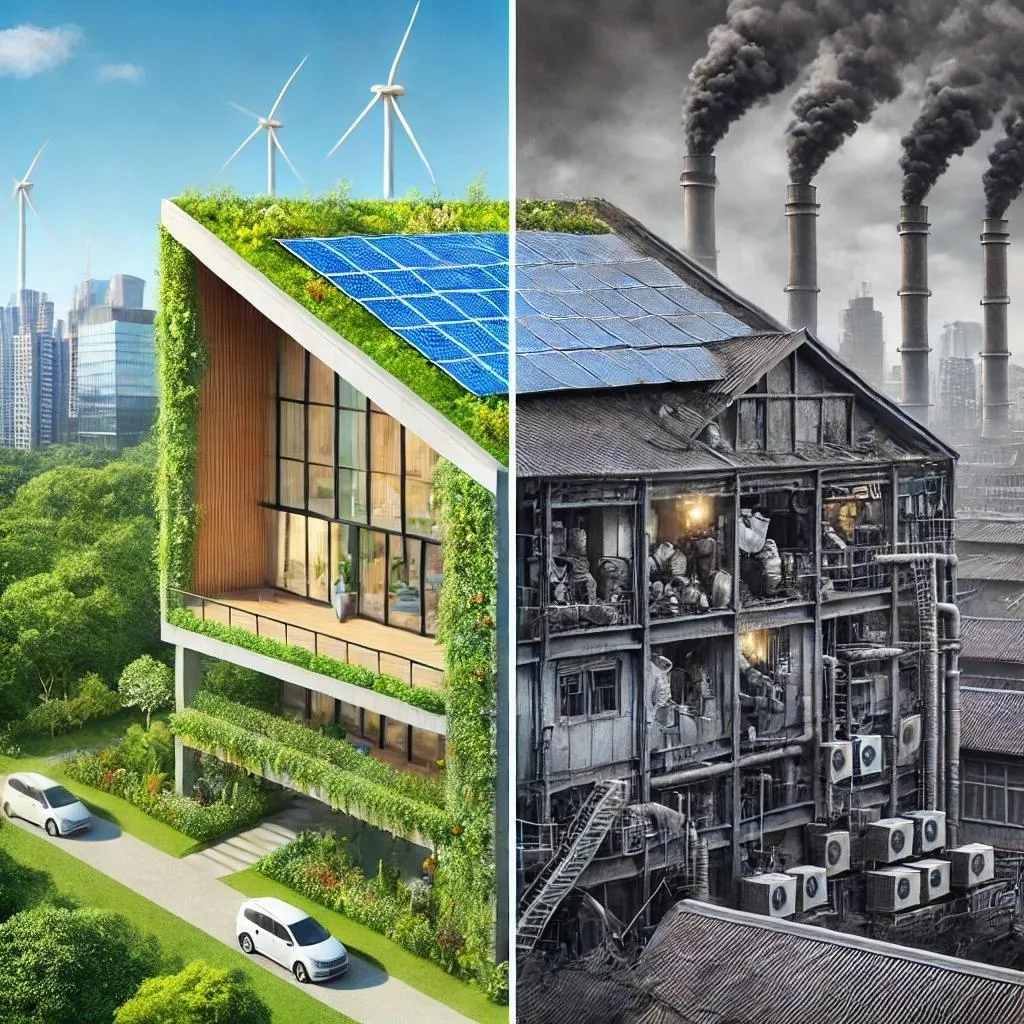Imagine a world where your home doesn’t just shelter you, it protects the planet too. That’s the promise of green building. But what exactly is it? And why should you care? Whether you’re a homeowner, a business owner, or just someone who cares about the environment, green building is reshaping how we think about construction.
What is a Green Building? More Than Just Eco-Friendly Walls
At its core, green building is all about designing and constructing buildings that respect the environment. It means using fewer resources, wasting less, and creating spaces that are healthier for people. From the drawing board to demolition, every stage of a green building’s life is planned with sustainability in mind.
But it’s not just about slapping some solar panels on the roof. It’s a mindset, a way of reimagining how we live and work without wrecking the planet.
Why Should You Care About Green Building?
Buildings account for a massive chunk of the world’s energy use and carbon emissions 37% in 2020, to be exact. Without smarter, greener buildings, those numbers could double by 2050. But there’s a bright side. Green buildings can help us fight climate change, save money, and make life better for everyone inside them.
How Do We Know a Building is Truly Green?
Not every building that claims to be green actually is. That’s where certifications come in badges of honor that prove a building meets strict sustainability standards:
Green Star and NABERS: Australia’s go-to standards for assessing building sustainability.
LEED (Leadership in Energy and Environmental Design): A gold standard in green building from the U.S. Green Building Council.
IGBC (Indian Green Building Council): India’s leading certification for green buildings, promoting sustainable building practices across residential, commercial, and industrial sectors. With IGBC’s star rating system (Certified, Silver, Gold, and Platinum), builders can easily demonstrate their commitment to sustainability.
GRIHA (Green Rating for Integrated Habitat Assessment): India’s national rating system developed by TERI and endorsed by the Ministry of New and Renewable Energy. GRIHA evaluates buildings based on energy efficiency, water conservation, waste management, and overall environmental impact making it especially relevant for India’s climatic and cultural context.
BREEAM (Building Research Establishment Environmental Assessment Method): The UK’s favorite way of rating big, sustainable developments.
DGNB (German Sustainable Building Council): Setting the bar for sustainable design in Germany.
EDGE (Excellence in Design for Greater Efficiencies): A World Bank-backed certification for eco-friendly projects in emerging markets.
The Power of Technology: Building Information Modelling (BIM)
Ever wish you could see a building’s eco-impact before it’s built?
That’s exactly what Building Information Modelling (BIM) does. This smart tech lets architects, engineers, and builders create a digital twin of a building, fine-tuning everything from energy use to material efficiency before a single brick is laid.
The Four Pillars of Green Building
What makes a building truly green?
It’s not just about pretty plants on the roof. Here are the core principles:
1. Energy Efficiency: Think solar panels, wind turbines, smart lighting, and energy-saving appliances that keep your bills low and your conscience clear.
2. Water Efficiency: From rainwater harvesting to water-saving taps, green buildings know how to make every drop count.
3. Material Efficiency: Using sustainable, low-impact materials like recycled steel, bamboo, and non-toxic paint makes a world of difference.
4. Healthier Indoor Air: No one wants to live in a toxic box. Green buildings use low-VOC paints, natural ventilation, and high- quality filters to keep the air fresh.
Green Building: More Than Just Saving the Planet
Going green isn’t just about hugging trees, it’s about better living. Green buildings are:
More Valuable: Sustainable properties often fetch higher resale prices and attract eco- conscious buyers or tenants.
Cost-Effective: Lower energy and water bills mean more money in your pocket.
Healthier: Clean air, natural light, and non-toxic materials create spaces where people thrive.
The Challenges of Going Green (And Why They’re Worth It)
Let’s be real, building green isn’t always easy. It can cost more upfront, and you need skilled people who know what they’re doing. But the long-term benefits? They’re hard to ignore. Lower bills, a smaller carbon footprint, and a healthier space to live and work are just the beginning.
The Future is Green, Are You Ready?
Green building isn’t just a trend, it’s the future. As more people wake up to the reality of climate change, eco-friendly buildings will become the norm, not the exception. And the best part? You can be part of this change.
Ready to turn your next project into a green building success story?
Let’s build a better, greener world — one brick at a time.
As the built environment continues to play a critical role in shaping our planet’s climate future, it is imperative for organizations to integrate comprehensive carbon management into their green building strategies. At Switch Climate Tech, we support businesses of all sizes in navigating their carbon footprints with clarity and precision. Our global standard-compliant platform streamlines the measurement of Scope 1, 2, and 3 emissions, aligns reporting with global standards, and uncovers actionable insights that drive both environmental responsibility and business value.
By turning complex emissions data into meaningful action, companies can better align their building operations with broader sustainability goals. To explore how advanced carbon accounting can complement and enhance your green building initiatives, visit us at switchclimatetech.com. Together, we can build a smarter, more sustainable future.”
#CarbonAccounting #ESG #Sustainability #ClimateAction #GHGProtocol #GreenBuilding #NetZero #SwitchClimateTech

